Office 2010, that means: The work nomad, serving the knowledge society full of cheer, circulating and communicating freely, can if needed slip into a safe nest to recuperate. Or at least that is what we get promised. Time pressures? It's just a nice challenge! Or is the nest as a sphere of pleasant security only the consolation for the manically mobile and continually stressed office nomad, i.e., compensation for the fact that no one can any longer work for themselves and above all to their own rhythm? Be that as it may. Today, we share inspirations, don our media skins and create a commune, that in its uterine caverns not only promises protection against the ice cold of super capitalism, but also generates its best ideas. Be that as it may, we are at a trade fair and there people will not yet be thinking of such things.
Seat stools
One thing is clear, however: The decidedly contemporary office proves to be a mixture of open space, in which we are all nomads and have to find a place, along with a few spaces for silent retreat where we can be alone or can confer in small groups. Everyone has to be permanently online today; there is no changing that. And desks can now be set at any height and thus turned into standing workstations, even if I for one will never understand why one is expected to sit better on a bar stool than on a seat that is not quite as high. But perhaps this is because it gives you more the (physical) feeling of not working but of chilling out. This could at least have something to do with the spatial behavior as part of nonverbal communications. If we sit on high, we feel superior. Perhaps this is actually the problem. Since hierarchies have (ostensibly) been abolished or at least flattened, everybody wants to be a little higher up. Essentially this is all about striking a balance between connection and separation, networking and isolation or creating conditions that enable everyone to choose temporarily between a more or less public and a more or less private sphere, and commute between the two. What is clear here is that no real peace and quiet is offered.
The office as a form of life
For example, Bene, opting for a little less collage in its approach, offers "Parcs", meaning a whole range of screening armchairs, small pavilions, curiosities and room layouts. They are colorful, but not brash in their textile colors, and thus designed to be pleasant. Here, again, you can choose between interaction and privacy as well as between workstation, communications, concentration and support areas.
What Tom Lloyd and Luke Pearson have designed by way of multi-purpose working landscapes is full of variation and yet cast from a single mold. In fact, it will be interesting to see how this office as a form of living (its style borrows strongly from the spirit of the 1960s), is received. The high armchair, made of three segments of a circle, certainly resembles a hybrid mixture of biomorphic wingback armchair, basket chair and no-tech command center.
Insular magical circles
There are many such cocoon armchairs at the Orgatec, mainly intended less as a complete system of the broadest variety of components and more as one-offs. There is a manifest tendency to adopt insular magical circles in the midst of a raging sea of networked communication, be it Blå Station's sofa and armchair, Montis' "Scene XXL" (by Gijs Papavoine) as a staggered flute with a seat in a distinct color or Palau's veritable basket chair with its clear corners and edges. Alongside the Bouroullecs' "Alcove Highback" (which I have already mentioned), it was the monumental "EarChair" by Studio Makkink & Bey for Prooff that links openness and seclusion, something also expressed in its two different colors. Prooff offers as its number 004 "Niche", a sofa with three high sides and a canopy - if two are placed facing each other you have a pleasant little room-in-room. All in all, there is a clear trend toward creating niches and caves.
It's all a matter of combination
Likewise not quite new, but in line with the need for flexibility and comfort, there is now a greater number of combinable elements that can thus be linked more or less at will to form entire strings of seats or seating-scapes. Arco offers not only Bertjan Pot's marvelously plain "slim office" (which can be supplemented by magnetic accessories), but also "side by side" by Karel Boonzaaijer and Dick Spierenburg, a solution consisting of straight sections and corner elements, that is as elegant as it is essentially conventional.
Uwe Fischer has been far more consistent in the thought he has devoted to moving the flexible design of large open rooms forwards. He has created a highly flexible system in the form of "Affair" for Cor (it consists of straight and curved elements for stools and backs and a side table), and it does more than just claim to be flexible. Combined using magnets, the individual components can actually be recombined at will without any tools required to form any number of new configurations. Slightly slanted at the front and rear edges, and highlighted with duo-color upholstery, "Affair" also exudes real elegance. And with "Scope", again for Cor, Uwe Fischer has developed another seating program that consists of only two individual elements and is just as well thought out. With or without an upper section, the system can be used to create small working islands or spacious room-in-room solutions. Here again it is the details that make all the difference.
Platform strategies
What would an office be without office chairs? Which are now available in just about any shape, size, or version. And we have long since got used to the fact that most of them are actually hardly chairs any longer. What we have before us in ever new versions are ergonomic sitting machines that seem to say nothing other than: Do not sit still. Sitting, so the message, is unhealthy - only movement counts. Which has led to medics and ergonomic experts proclaiming that having ants in your pants is the way to sit, and almost every office chair now encourages you to tilt, tip, angle and move your pelvis. The message remains paradoxical: If you, dear staff member, really have to sit down then at least don't sit still. So who is surprised by the fact that all those minds locked into their workstations and gazing at their screens are now wobbling back and forth, supporting and moving their spines. In the form of "Sayl", for example, Hermann Miller is continuing its excessively biomorphic/constructive approach.
It is another development that seems far more exciting. Vitra has launched "UnixChair", designed by Antonio Citterio: It is not only a chair in different versions but a kind of all-rounder, and this means at the end of the day opting for a system that was devised by carmakers some time ago: a platform strategy. Now this, as we all know, does not mean that all models have the same "chassis" (i.e., base) but that, for all the different forms and functions, an increasingly similar set of components are used. The idea of the kit chair will no doubt be with us for a few years to come.
Likewise inspired by auto-industry production methods: Stefan Diez's "Chassis", which, after a long development lead time is now at long last going into production at Wilkhahn. "Chassis" is more than an office chair and even in its final form it has lost none of its technical elegance. Even if it is a shame that it is not yet available with a seat in the form of molded leather - but it does come in fine white, black and grey lacquer finishes. Only the office cowboys will be a little sad.
The special table
For all the democratization of the office, a bit of an imperial stance remains, manifest in the tables, which after all, is where the decisions are taken. That said, the table can differ greatly depending on the designer and corporate culture. Dignified, sculptural, classically elegant and of solid value as with Hadi Teherani and his "S 8000" for Thonet; matter-of-fact, minimalist/cool, and anti-hierarchical team center with lockable storage space as with Naoto Fukasawa and his "Kuubo" for Vitra; and finally extravagant, egomaniac, neo-avant-garde and mannerist as with the "SitTable" by Ben van Berkel and UNStudio for Prooff. However, we all know: The next office generation is bound to come. After all, the office is just much a temporary affair as is the society that gives birth to it.
www.orgatec.de
 Ad Hoc High Work & ID High by Antonio Citterio for Vitra
Ad Hoc High Work & ID High by Antonio Citterio for Vitra
 Toguna by Luke Pearson, Tom Lloyd for Bene
Toguna by Luke Pearson, Tom Lloyd for Bene
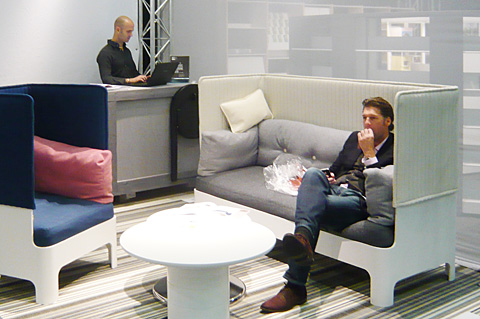 Koja high backrest by Fredrik Mattson for Blå Station
Koja high backrest by Fredrik Mattson for Blå Station
 Scene XXL by Gijs Papavoine for Montis
Scene XXL by Gijs Papavoine for Montis
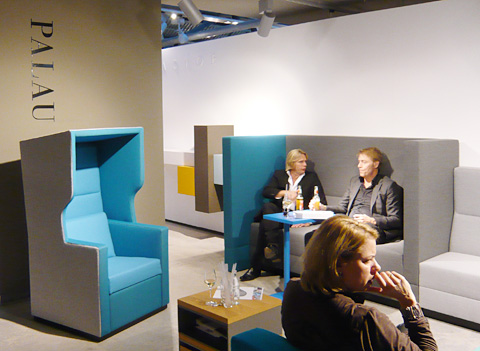 Tank by Edward van Vliet, Bricks by Robert Bronwasser for Palau
Tank by Edward van Vliet, Bricks by Robert Bronwasser for Palau

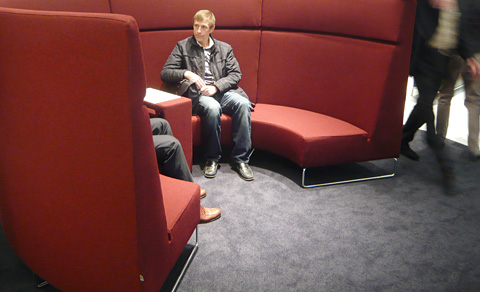 VS Vereinigte Spezialmöbelfabriken
VS Vereinigte Spezialmöbelfabriken
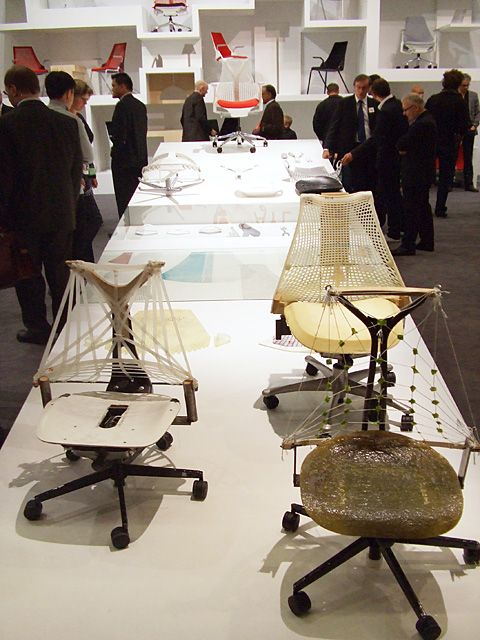 Sayl Chairs Collaboration by Yves Béhar and fuseproject for Herman Miller
Sayl Chairs Collaboration by Yves Béhar and fuseproject for Herman Miller
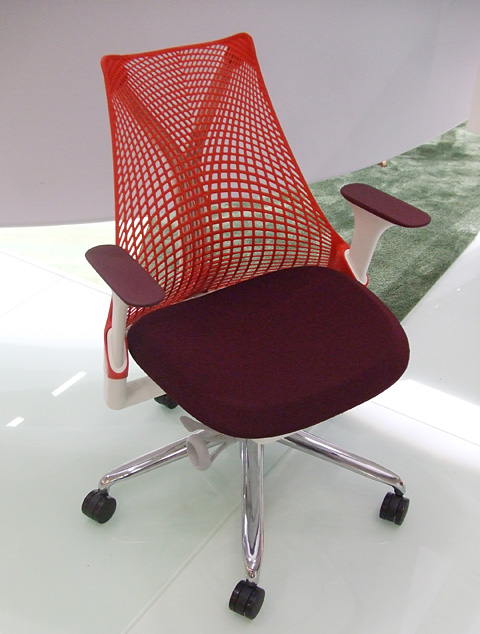 Sayl Chairs Collaboration by Yves Béhar and fuseproject for Herman Miller
Sayl Chairs Collaboration by Yves Béhar and fuseproject for Herman Miller
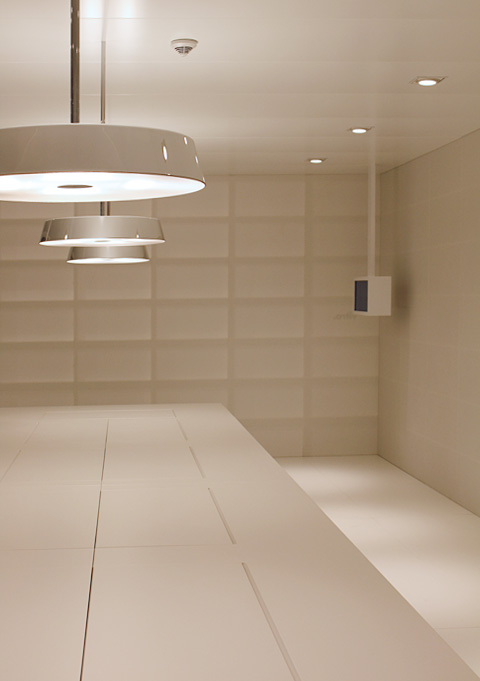 Kuubo by Naoto Fukasawa for Vitra
Kuubo by Naoto Fukasawa for Vitra
 Kuubo by Naoto Fukasawa for Vitra
Kuubo by Naoto Fukasawa for Vitra
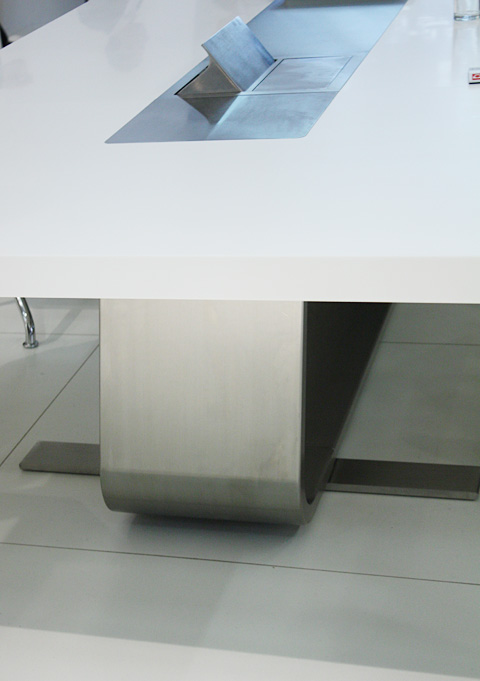 Konferenztisch S 8000 by Hadi Teherani for Thonet
Konferenztisch S 8000 by Hadi Teherani for Thonet
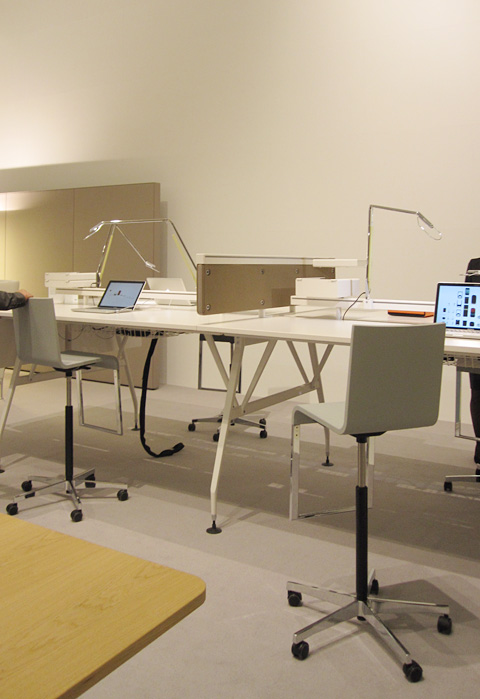 Ad Hoc High Work by Antonio Citterio for Vitra
Ad Hoc High Work by Antonio Citterio for Vitra
 Communal Cells by Ronan & Erwan Bouroullec for Vitra
Communal Cells by Ronan & Erwan Bouroullec for Vitra
 Wing Chair by Luke Pearson, Tom Lloyd for Bene, photo © Dimitrios Tsatsas, Stylepark
Wing Chair by Luke Pearson, Tom Lloyd for Bene, photo © Dimitrios Tsatsas, Stylepark
 EarChair by Studio Makkink & Bey for Prooff
EarChair by Studio Makkink & Bey for Prooff
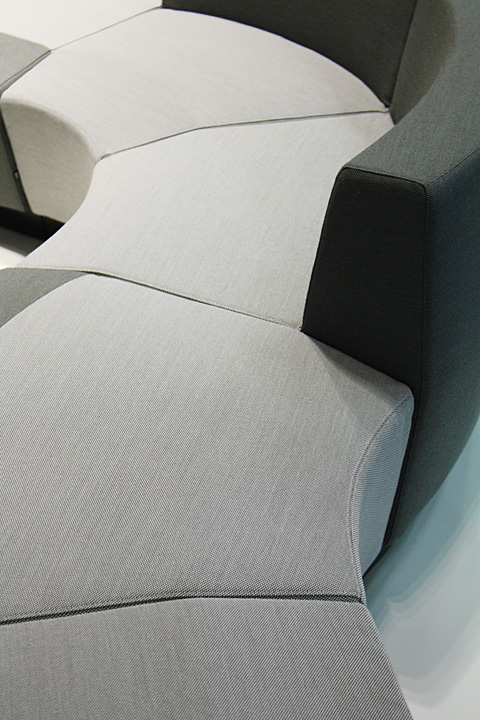 Affair by Uwe Fischer for Cor, photo © Dimitrios Tsatsas, Stylepark
Affair by Uwe Fischer for Cor, photo © Dimitrios Tsatsas, Stylepark
 Affair by Uwe Fischer for Cor
Affair by Uwe Fischer for Cor
 Scope by Uwe Fischer for Cor
Scope by Uwe Fischer for Cor
 Unix Chair by Antonio Citterio, ID Chair Concept by Antonio Citterio for Vitra
Unix Chair by Antonio Citterio, ID Chair Concept by Antonio Citterio for Vitra
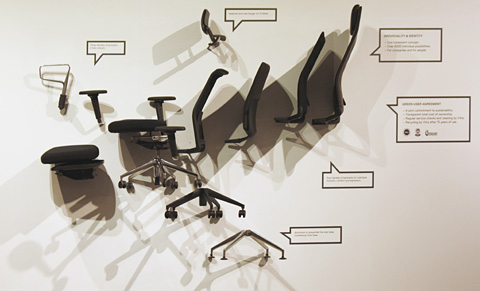 ID Chair Concept by Antonio Citterio for Vitra
ID Chair Concept by Antonio Citterio for Vitra
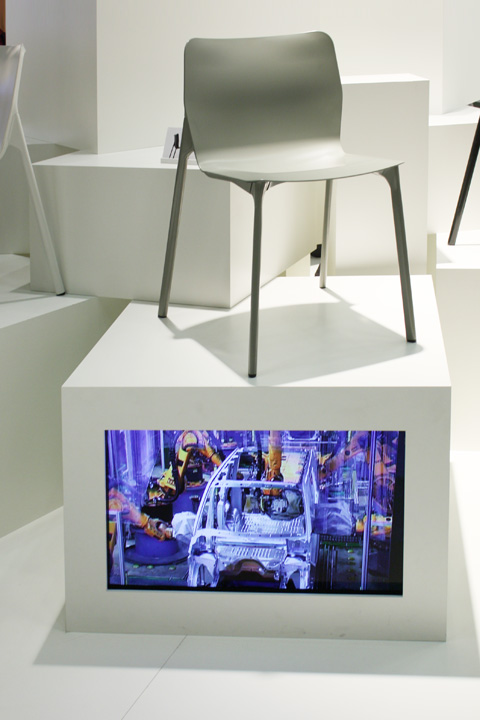 Chassis by Stefan Diez for Wilkhahn, photo © Dimitrios Tsatsas, Stylepark
Chassis by Stefan Diez for Wilkhahn, photo © Dimitrios Tsatsas, Stylepark
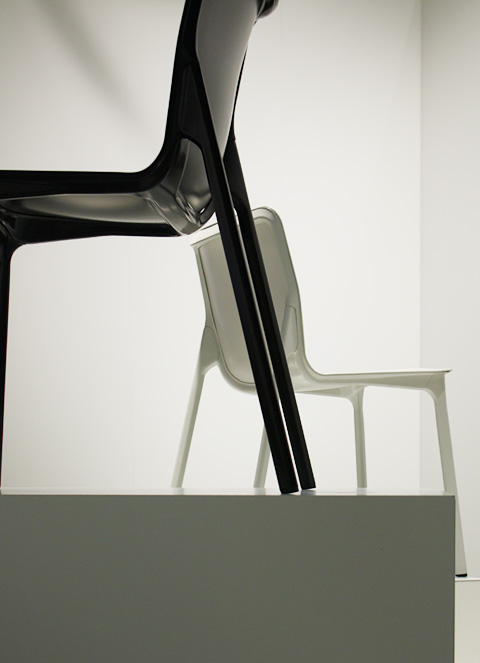 Chassis by Stefan Diez for Wilkhahn, photo © Dimitrios Tsatsas, Stylepark
Chassis by Stefan Diez for Wilkhahn, photo © Dimitrios Tsatsas, Stylepark
 Chassis by Stefan Diez for Wilkhahn, photo © Dimitrios Tsatsas, Stylepark
Chassis by Stefan Diez for Wilkhahn, photo © Dimitrios Tsatsas, Stylepark
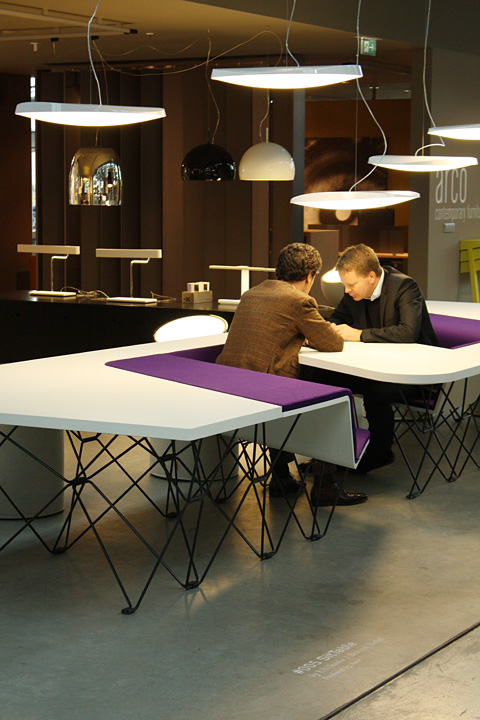 SitTable by UNStudio for Prooff
SitTable by UNStudio for Prooff





